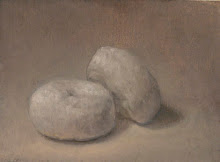
The Prince Consort, diagnosed with typhoid fever, died on 14 December 1861, believed to be due to the primitive sanitary conditions at Windsor Castle. His death devastated Victoria, who was still affected by her mother's death in March of that year. She entered a state of mourning and wore black for the remainder of her life. She avoided public appearances, and rarely set foot in London in the following years. Her seclusion earned her the name "Widow of Windsor." She blamed her son Edward, the Prince of Wales, for his father's death, since news of the Prince's poor conduct had come to his father in November, leading Prince Albert to travel to Cambridge to confront his son.
Victoria's self-imposed isolation from the public greatly diminished the monarchy's popularity, and even encouraged the growth of the republican movement. She did undertake her official government duties, yet she also chose to remain secluded in her royal residences—Balmoral Castle in Scotland, Osborne House on the Isle of Wight, and Windsor Castle.
As time went by, Victoria began to rely increasingly on a manservant from Scotland, John Brown. A romantic connection and even a secret marriage have been alleged, but both charges are generally discredited. However, when Victoria's remains were laid in the coffin, two sets of mementos were placed with her, at her request. By her side was placed one of Albert's dressing gowns, while in her left hand was placed a piece of Brown's hair, along with a picture of him. It was learned in 2008 that Victoria's body wore the wedding ring of John Brown's mother, placed on her hand after her death. Rumours of an affair and marriage earned Victoria the nickname "Mrs Brown".


No comments:
Post a Comment